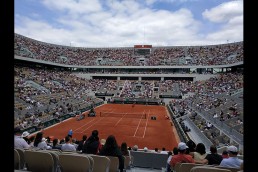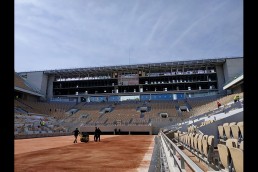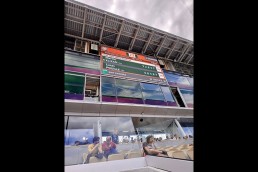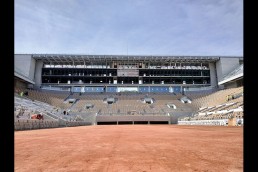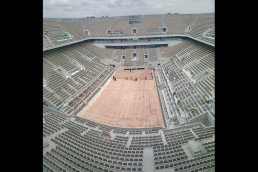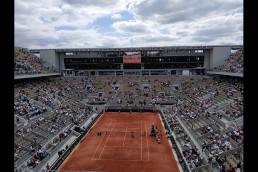This website uses cookies so that we can provide you with the best user experience possible. Cookie information is stored in your browser and performs functions such as recognising you when you return to our website and helping our team to understand which sections of the website you find most interesting and useful.
Stade Roland Garros
ProjectStade Roland GarrosLocationParis, FranceManufacturers DanleyDistributorDEMOAInstallerNeuron Pro AudioSubmitted by Danley
Widely considered to be the most physically demanding tennis tournament in the world, due to its slow-playing clay court surface and best-of-five-set men’s singles matches, the French Open is the premier clay court championship, held over two weeks at the Stade Roland-Garros in Paris.
Constructed in 1928 to host France’s first defence of the Davis Cup, the stadium has undergone a number of phases of renovation and expansion. From 2004 to 2008, plans were developed to build a covered stadium with a roof, as complaints continued over delayed matches. Various proposals were put forward to expand the facility or move the tournament to a new, 55-court venue outside of Paris. In 2011 the decision was taken to maintain the tournament within its existing venue. The expansion project called for a new stadium to be built alongside the historical Auteuil’s greenhouses and expansion of old stadiums, and the tournament village.
A wide-ranging project to overhaul the venue was presented in 2011, including building a roof over court Phillipe-Chatrier, demolishing and replacing Court number one with a grassy hill for outdoor viewing, and geographical extension of the venue eastward into the Jardin des Serres d’Auteuil.
Legal opposition from environmental defence associations and other stakeholders delayed the project for several years as litigation ensued. The city council voted against the expansion in May 2015, but in June 2015, Paris Mayor Anne Hidalgo announced the signing of the construction permits, with work scheduled to begin in September of that year, and concluding in 2019. In December 2015 the Administrative Court of Paris once again halted renovation work, but the French Tennis Federation won the right to carry out the renovation on appeal.
Renovation work finally commenced at the end of the 2018 edition of the tournament. The 2019 edition finally inaugurated Court Phillippe-Chatrier and its renewed Danley sound system.
The largest of the courts, Court Phillipe-Chatrier now accommodates over 15,000 spectators, so intelligibility was vital.
“The sound reinforcement system at Roland Garros is used mainly for speech reinforcement for the referee, players and organisers, as well as for advertising and the national anthem,” explained Etienne Bérard, Director of DEMOA, a French audiovisual distribution company. The audiovisual consultant on the project, CREAPRAG, asked DEMOA to find an efficient, high-intelligibility sound reinforcement system for the rebuilt stadium. Etienne modelled a Danley point-source system, relying on Danley’s full-fidelity, phase-coherent output to deliver the requested intelligibility.
“The client wanted a system that could fit into the relatively small niche that had been given for loudspeaker placement,” Etienne continued. “In addition, it had to be highly directional so as not to disturb the press room located just below the loudspeaker niche. I used Bose modelling software to propose a system using a Danley J3-94 Jericho Horn, and we offered proof-of-concept with a demo up against a high-end line array. The Danley J3-94 Jericho Horn showed vastly better intelligibility across its output pattern and 15dB greater rejection at the back of the loudspeaker (at 500Hz). The CREAPRAG consultant expressed to the tournament officials that he had never experienced such phenomenal intelligibility at such distances and in such an environment (it measured around 0.75 STI at 60-metres).”
DEMOA rented the system from Neuron Pro Audio of Manchester, UK, who installed, operated, and removed the temporary system. The four Danley THmini15 subwoofers were placed left and right of the main LED screen, two each. Three Powersoft X4 amplifiers with integrated, DSP powered and conditioned the Danley J3-94 Jericho Horn and the Danley THmini15 subwoofers. “We received a lot of enthusiastic comments about the sound quality and power from such a modest-looking system,” Etienne reported. “The Danley subwoofers also made a good impression. They combined to deliver a surprising amount of bass for such a large venue.”
